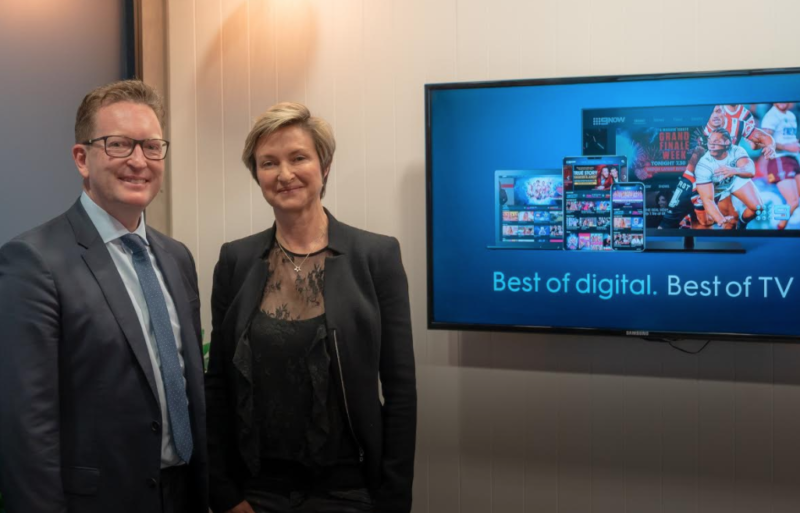Nine launches its addressability solution, promising ‘far more transparency’ than digital giants
Nine will provide advertisers with cross-platform targeted advertising opportunities through broadcast video on demand (BVOD) platform, 9Now, with “far more transparency” than Facebook and Google, the company announced today.
The new solution, which Nine has described as “true addressability at scale”, will allow brands to target 9Now’s 6.5m user ID database based on age, sex and location.



“. . . true addressability at scale”. Good money made from spouting bullshit.
Issue with the Broadcast Media industry in Australia defined in the article above.
“Within 9Now, you can target at an addressable level, which nobody else can do. That’s just fact because we are the only ones that have 6.5m IDs and then we can prove the effectiveness of your advertising based on the return on your investment as a result of the sales,” Stephenson said. – Welcome to 2015, wait it’s 2018
You are talking about targeting individuals which people have been doing for ages, as for addressability that is something that is driven by households and the central data point not individuals.
Also targeting on Live streaming BVOD? Right now users are just seeing broadcast ads and you’ve got major issues with your ads on VOD.
Please do your internal homework, the above makes you look bad.
Targeting on BVOD, doing it for ages?
Would be great if you list a few examples of this, perhaps even a few of those who were doing it back in 2015…
Looks like someone forgot to reference their own homework.
From a Media buying perspective there we always challenges with Nine linked to what we understood to be their Freewheel ad-server and being able to target – it was Run of Longform, Male skewed or female skewed which ended up all just being run of. Around then I also believe there was a push in market coupling Microsoft data with inventory.
Others using the Google platform had at least capabilities to target category, show level etc.
Capabilities to do audience targeting on video have been there for some time as well the technology with the right smarts Selling fictitious capabilities and fighting programmatic stumped the rate of change in being able to access targeted video.
Companies like Seven are not as innovative as people may think it’s all a process of joining the dots, to do that you need to right people not just those who say the right thing. First step in addressing that in the AU market is cleaning our the old guard and bringing in the new, it’s not technologies fault all the time.
Articles like the above simply remind us that the transparency problem exists at the human level, remove the BS and everyone wins.
What is your ‘On Target Rate’ percentage for Nine’s Demo/Geo data, measured against Nielsen DAR?
This will determine how accurately 9’s members are declaring their demo & geo data.
Otherwise, I might as well just use a 3rd party data supplier.
How does a small sample of Facebook user accounts determine the accuracy of data?
@ Not so anonymous: What do you suggest we use instead to benchmark data quality?
How many of those 6.5m users are a) active b) duplicated against Seven’s & Ten’s BVOD users? Highly doubt those two answers will make for a cost efficient and scalable video solution when they only deliver across three to four programs a year. If only media planner/buyers asked these questions.
Digital video ad targeting is not addressable TV people. This is embarrassing for the Australian market.
Still can’t do addressable of CTV despite a login because the TV has no device ID like a computer or mobile/app. Doesn’t matter, it’s only 35% of digital CUTV streams and growing. A data-driven focus on Desktop sounds pretty future-proof.
Wouldn’t that be what the login system solves though? They know that a stream view via the app on the Connected TV is John Doe and his associated audience segmentation – serve him a a targeted ad?
Households are more than likely behind the CTV. targeting an individual ad to a user is not addressable. You need to take the IP addresses of the CTV’s determine location and infer data. Sorry for those who thought addressable was a silver bullet, it simply takes you back to a world or probabilities and inferences.
As a user that has been forced to log in when will I get a good ad experience for catch up on 9Now.
Right now I get the same ads over and over and over again.
Nine can you please fix your ad experience on 9NOW
In The Friends of Voltaire, Hall wrote the phrase: “I disapprove of what you say, but I will defend to the death your right to say it” (which is often misattributed to Voltaire himself) as an illustration of Voltaire’s beliefs. Hall’s quotation is often cited to describe the principle of freedom of speech.